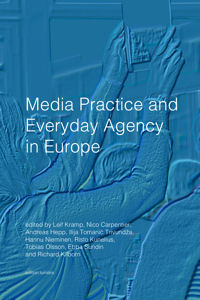
| |||
Media Practice and Everyday Agency in Europe | |||
| Title chapter: | Media Effects as a Two-Sided Field: Comparing Theories and Research of Framing and Agenda Setting | ||
| Author: | Erik Knudsen | ||
| Keywords: | Framing, Media Effects, Agenda Setting, Public Opinion, Content | ||
| Abstract: | Although studies of how and the extent to which the media have an influence on public opinion are a fractured domain, several studies have suggested that the media does exert an effect on public opinion. Moreover, several elected officials invests resources to 'spin' the news, assuming that the media exerts a significant influence. However, this article argues that theories regarding media effects are a two-sided research field. The first, the origins of effect studies, investigates effects on attitudes and behaviour. On the other hand, this article argues that today's effect studies also include a study of the content itself-without studying the effect on the audience. To illustrate this, two theories of media effects are compared: agenda setting and framing-asking whether theories and studies of agenda setting and framing contributes to this argument. Thus, an overview of agenda setting and framing definitions and the origins of the theories are investigated. Furthermore, different studies and approaches of doing agenda setting and framing research, is discussed. The review of the literature reveals that agenda setting research follows the original approach of media effects-studying both the content and changes among the public's opinion. Effect theories concerning the content itself are often associated with framing theory. However, framing studies are also concerned with studies of attitude change. This indicates that framing serves as an example of a media effect theory investigating both sides of the field. | ||
| >Click here to download full chapter [pdf] | |||
|
The | |||